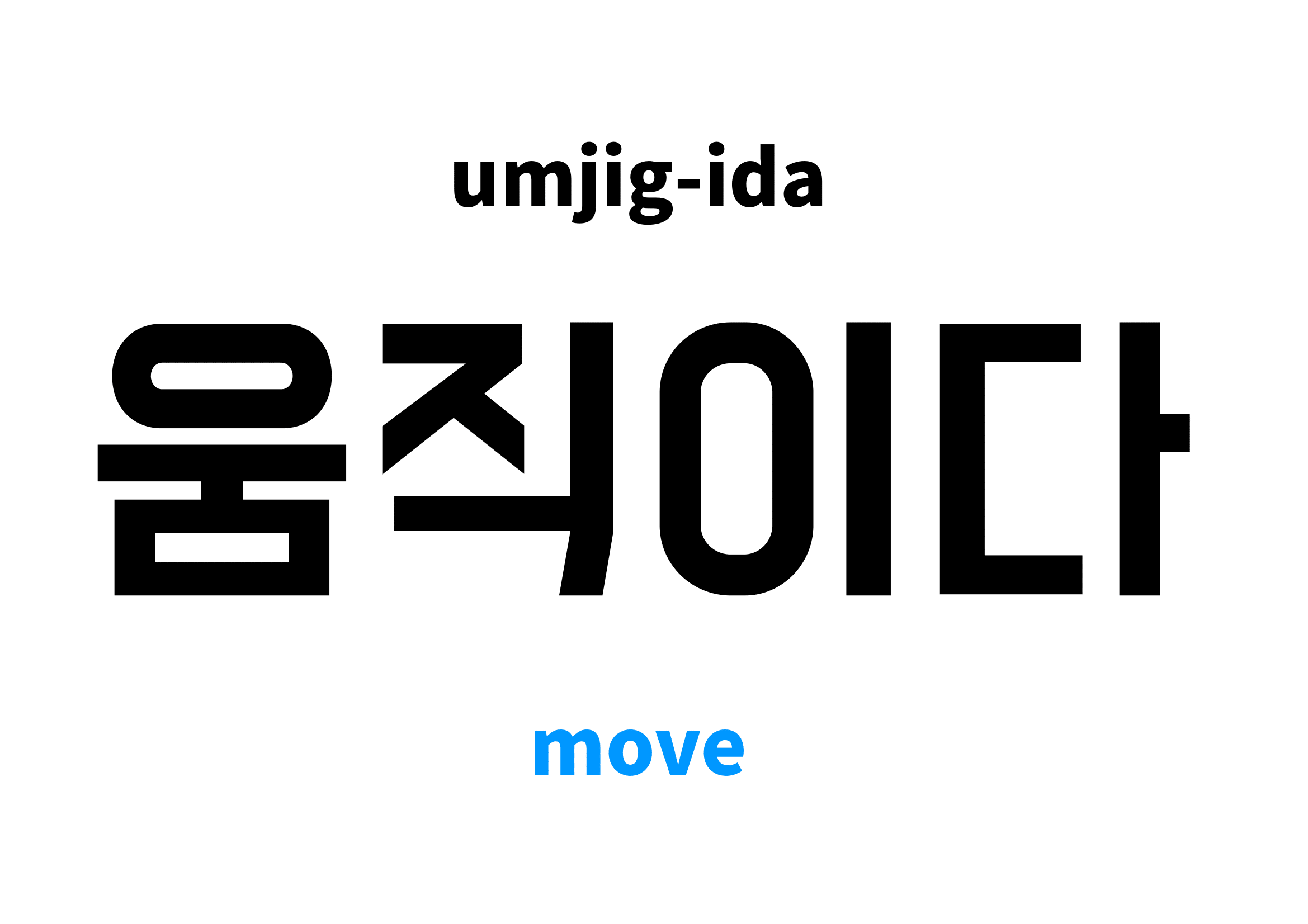 Move in Korean is 움직이다. For examples, you can use like [움직인 발가락, 움직이며 일하다]. In this post you will learn how to pronounce and use 움직이다 along with examples.
Move in Korean is 움직이다. For examples, you can use like [움직인 발가락, 움직이며 일하다]. In this post you will learn how to pronounce and use 움직이다 along with examples.
Basics
| Word | Part | Chinese | Sound |
| 움직이다 | verb | — | 움지기다 |
움직이다 Meaning
| Meaning | Explanation |
| move; budge; be in motion | For a position or posture to change; to change a position or posture. |
Examples
| 움직인 발가락. |
| moving toes. |
| 움직이며 일하다. |
| move and work. |
How to Conjugate 움직이다
① Formal High (합니다체)
| Present |  움직입니다 움직입니다 |
| Past |  움직였습니다 움직였습니다 |
| Past Perfect |  움직였었습니다 움직였었습니다 |
| Future |  움직일 것입니다 움직일 것입니다 |
| Condition |  움직이겠습니다 움직이겠습니다 |
② Informal High (해요체)
| Present |  움직여요 움직여요 |
| Past |  움직였어요 움직였어요 |
| Past Perfect |  움직였었어요 움직였었어요 |
| Future |  움직일 것이에요 움직일 것이에요 |
| Condition |  움직이겠어요 움직이겠어요 |
③ Informal Low (해체)
| Present |  움직여 움직여 |
| Past |  움직였어 움직였어 |
| Past Perfect |  움직였었어 움직였었어 |
| Future |  움직일 것이야 움직일 것이야 |
| Condition |  움직이겠어 움직이겠어 |
④ Formal Low (한다체)
| Present |  움직인다 움직인다 |
| Past |  움직였다 움직였다 |
| Past Perfect |  움직였었다 움직였었다 |
| Future |  움직일 것이다 움직일 것이다 |
| Condition |  움직이겠다 움직이겠다 |


Comments